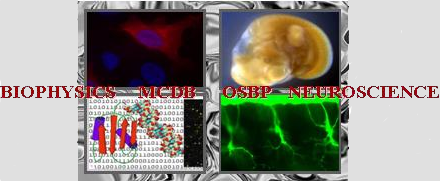Poster abstracts
Poster number 27 submitted by Kumudha Narayana Musini
Quantification of Sciatic Nerve Inflammation and Skeletal Muscle Characteristics in Patients with Charcot-Marie-Tooth Disease Using 18F-FDG PET/CT Imaging
Kumudha Narayana Musini, MS (Biophysics Graduate Program), Avery Balcom, Eleanor Rimmerman, MS (Undergraduate Program at Ohio State University, Biophysics Graduate Program), Ting-Heng Chou, PhD Jenna Trainer, BS (Research Institute at Nationwide Childrens Hospital ), Michael R. Go, MD (Ohio State University College of Medicine), Said A. Atway, DPM Michael Isfort, MD (Ohio State University College of Medicine), Mitchel R. Stacy, PhD (Ohio State University College of Medicine and Research Institute at Nationwide Childrens Hospital Faculty Affiliate, Biophysics Graduate Program)
Abstract:
Objective: Charcot-Marie-Tooth (CMT) is a degenerative peripheral nerve disease that gradually results in lower extremity muscle weakness and atrophy. Previous studies have used MRI of the mid-thigh to quantitatively assess changes in sciatic nerve size and muscle atrophy in CMT patients. However, to date, a hybrid PET/CT imaging approach has not been applied for dual assessment of CMT-induced peripheral nerve inflammation and skeletal muscle remodeling beyond the thigh. Therefore, this clinical pilot study aimed to apply 18F-FDG PET/CT imaging to quantify sciatic nerve inflammation and regional muscle characteristics across the whole lower extremity.
Methods: We prospectively enrolled patients with CMT type 1A (n=6) and healthy control subjects (n=6) to undergo 18F-FDG PET/CT imaging of the lower extremities. 18F-FDG uptake in the sciatic nerve was analyzed on PET/CT images to quantify nerve inflammation, while CT images were manually segmented to quantify the muscle fat fraction and density in four calf and eight thigh muscle groups. Statistical analyses were performed to compare the muscle characteristics and sciatic nerve inflammation between healthy controls and CMT patients.
Results: CMT patients showed a significant increase in 18F-FDG uptake in the sciatic nerve compared to healthy control subjects (P<0.015). Muscle densities in CMT patients were significantly reduced compared to the healthy controls in all calf and thigh muscles (P<0.05). Fat volume fractions in CMT patients were significantly higher than healthy controls in all calf muscle groups and several thigh muscles, all P<0.05.
Conclusion: 18F-FDG PET/CT imaging may provide a unique approach for quantitatively assessing peripheral nerve inflammation and resulting CMT-induced alterations in skeletal muscle characteristics. PET/CT imaging may also hold promise as a novel, noninvasive method for monitoring responses to emerging gene therapies in the CMT patient population.
Keywords: Charcot-Marie-Tooth, 18F- FDG PETCT, sciatic nerve and muscle atrophy
